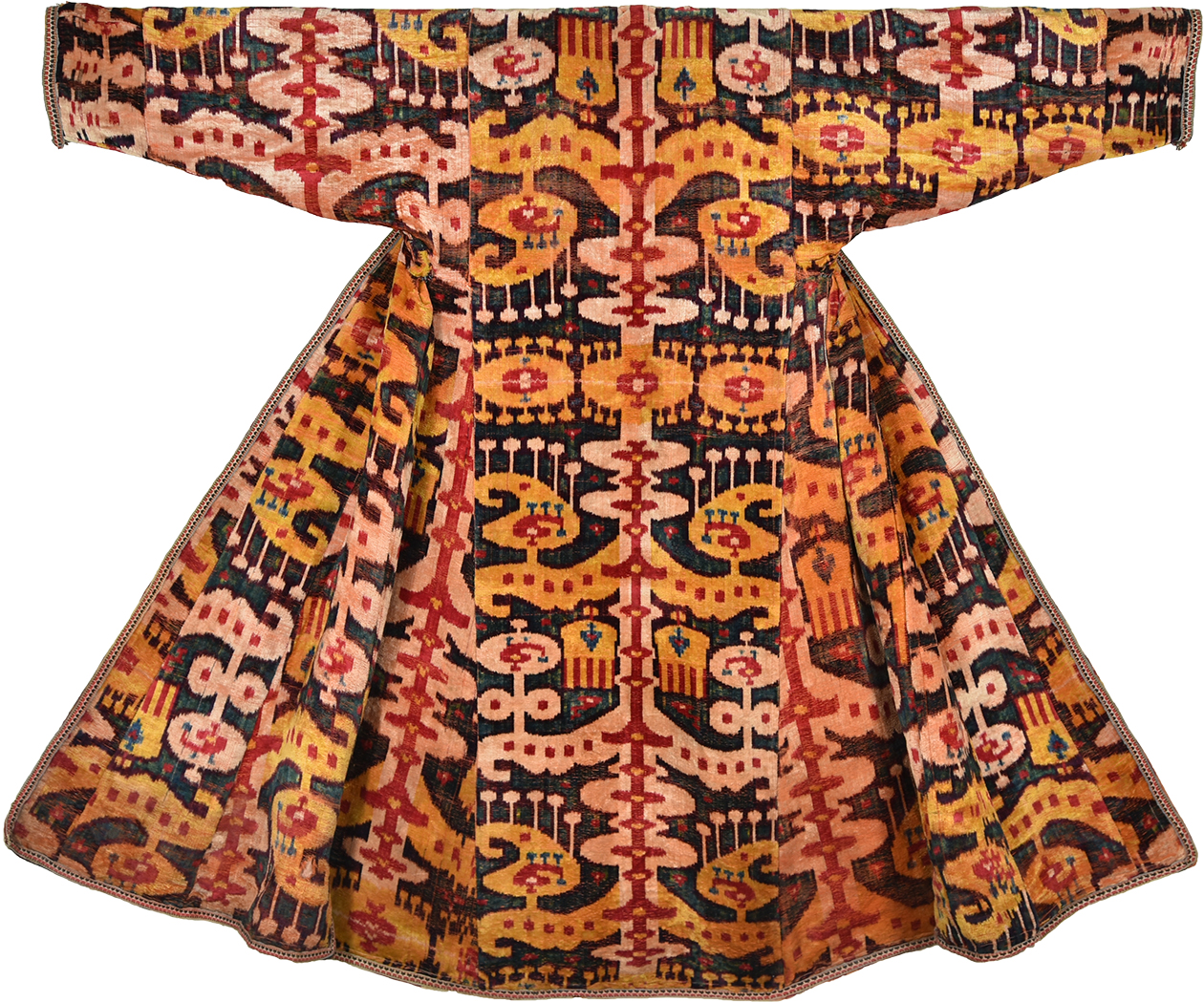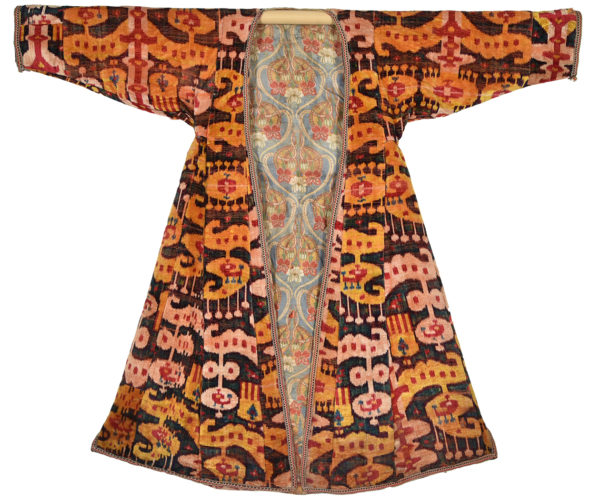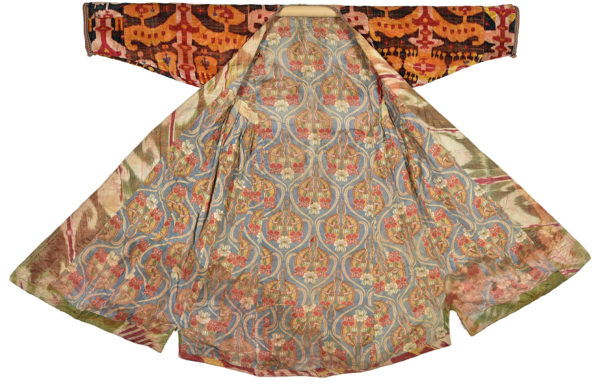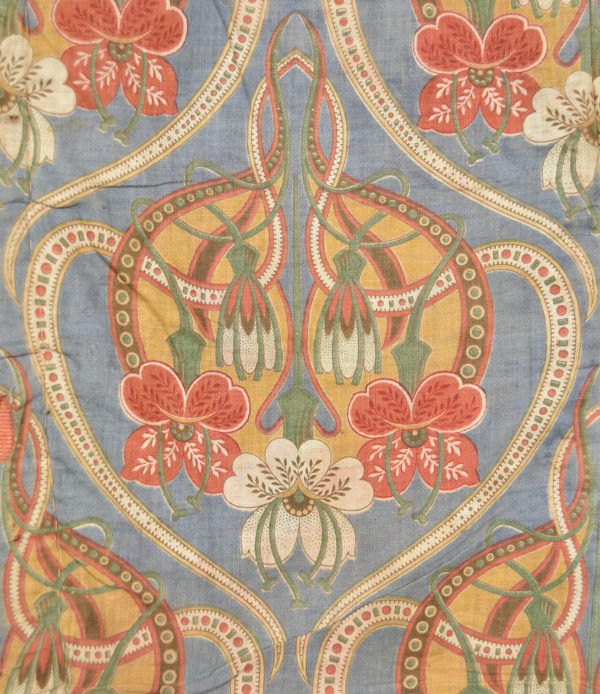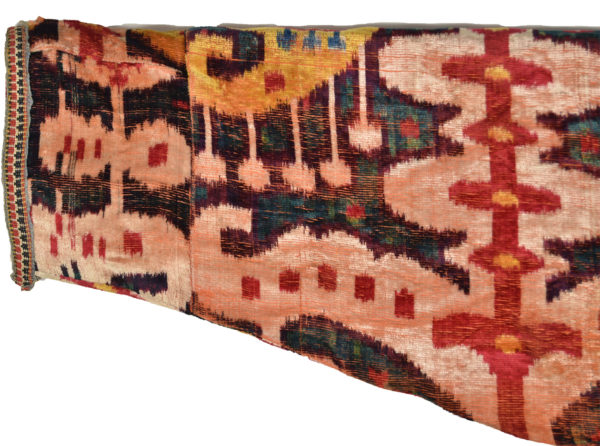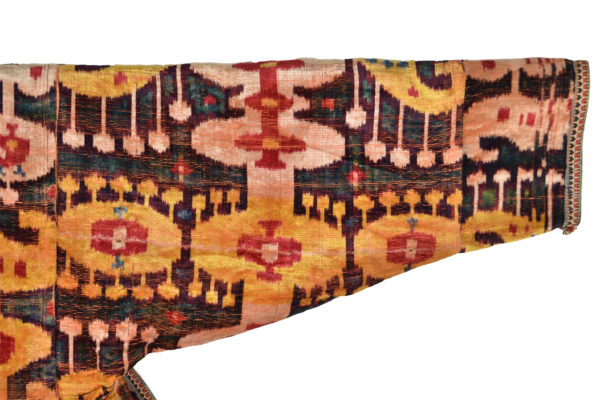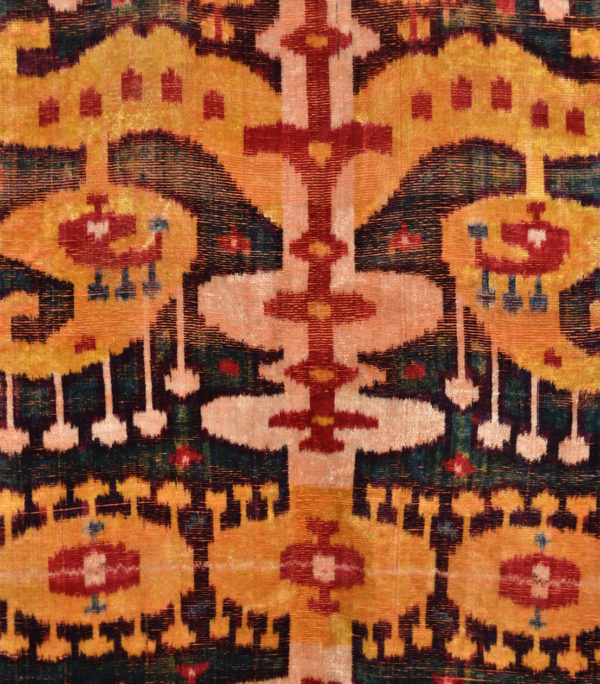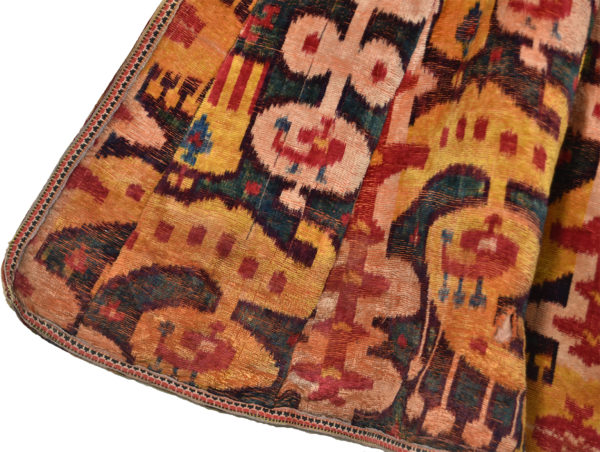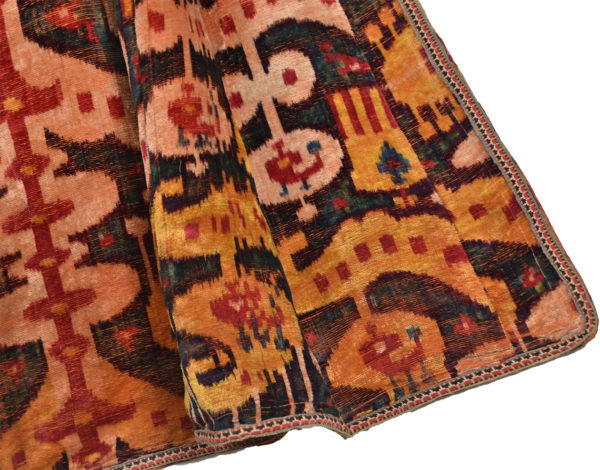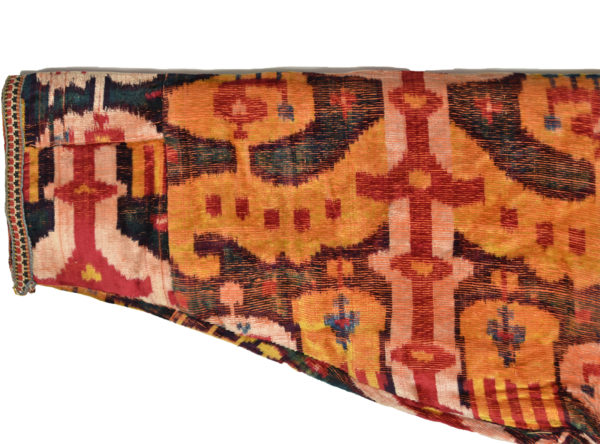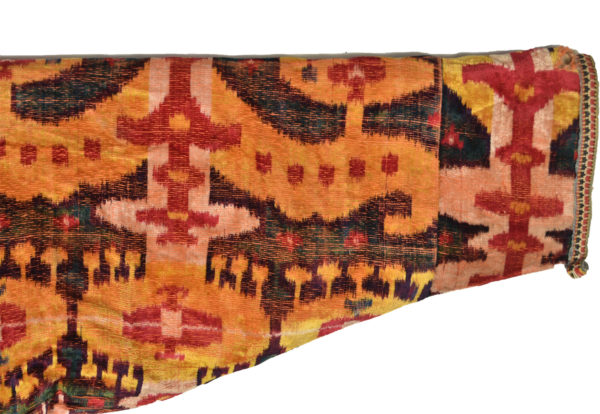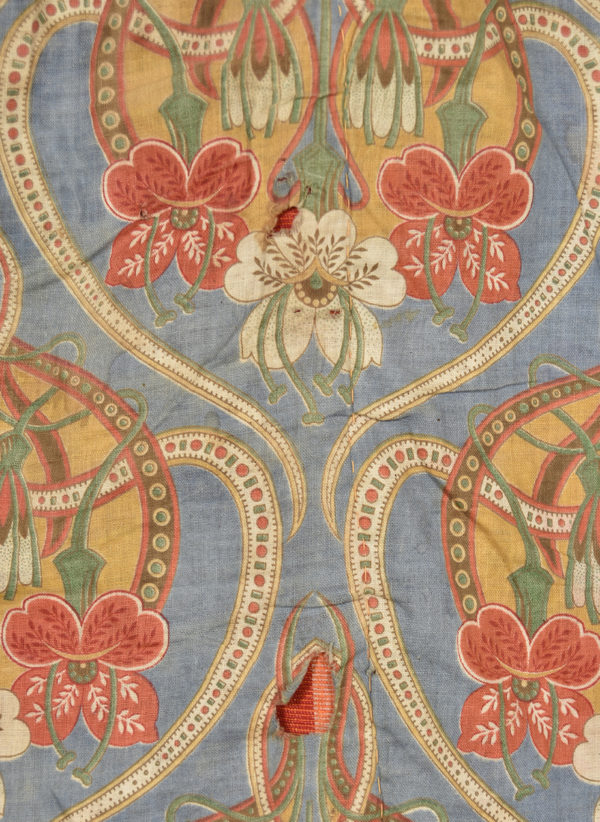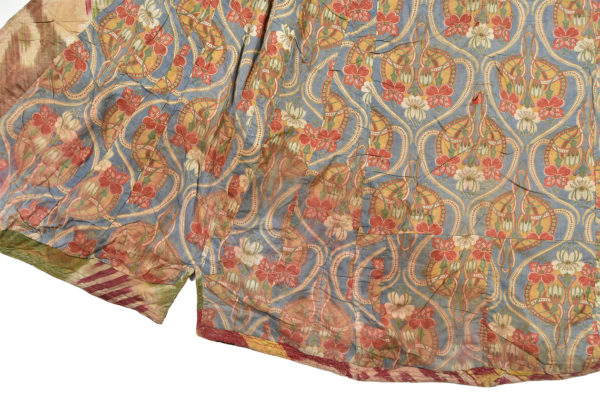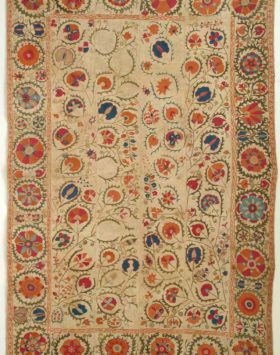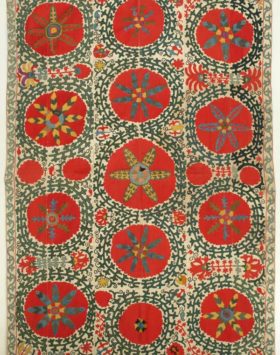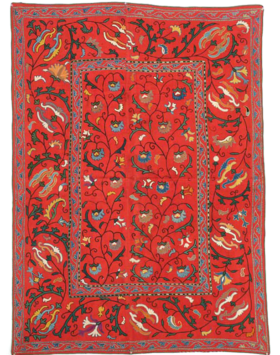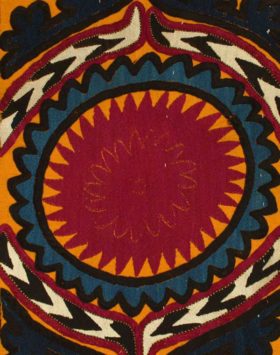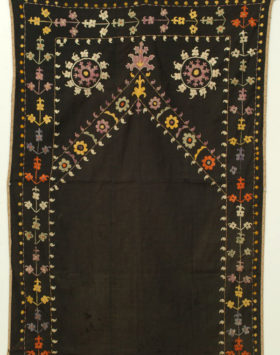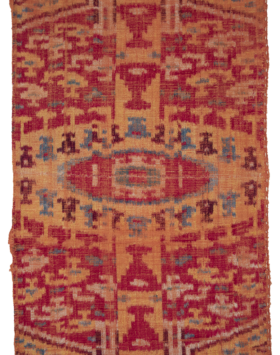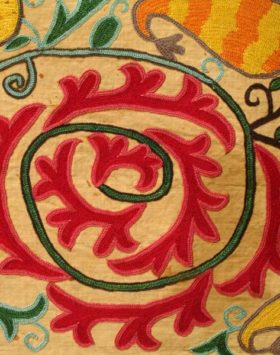Velvet Ikat Chapan
Ikat dyeing was practiced in a very simple form for centuries in Central Asia. Then, in the 19th century, ikat dyeing became the most active and widely distributed textile art in Central Asia. Ikats traveled across the steppes as trade goods and as gifts of robes of honor from proud Kans to the Tsars and visiting dignitaries. It was in that golden age of ikat that the first velvet ikat appeared. Velvet ikats, called Baghmal, quickly became the most costly and exclusive ikats of all. Textiles have always played a prominent role in Asian cultures. Clothing from the sixteenth to nineteenth is an endless source of information about the customs of diverse cultures.
In the making of velvet ikats, the weaver was using a complicated loom that allows threading of a double warp. Plain, one color silk thread was the foundational warp. It was then threaded with silk warp of ikat-dyed threads several times the length of the plain warp. As the weaving of the cotton weft progressed, the ikat-dyed warp was raised separately over grooved wires inserted on alternate picks. After a section was woven, a sharp blade was run down the grooves, leaving the velvet pile with its ikat pattern held by the alternate pick of the cotton weft.
This expensive and labor intensive fabric was used for the making of women’s chappans and small children’s hats.
This velvet ikat chappan is of ample proportions with a symmetrical design. The velvet pile is soft, long and in excellent condition. It is lined with Russian chintz and its borders are embroidered. It features typical zoomorphic shapes. Traditionally the ikat designers did not use templates or stencils, relying instead on their eyes and experimenting with forms and thus contributing to the of kilter design.
Circa: 19th century
Origin: Uzbekistan
Material: Silk Velvet
Condition: Excellent antique condition
Dimensions: 48" X 56" Sleeve to Sleeve
Inventory number: WR3934
$12,500
SOLD
Call: (646) 370-6801
E-mail us: yosi@sarajo.com
